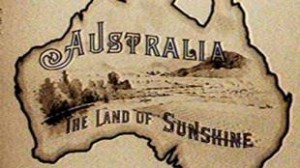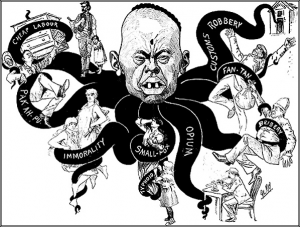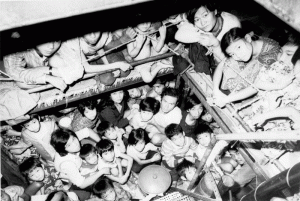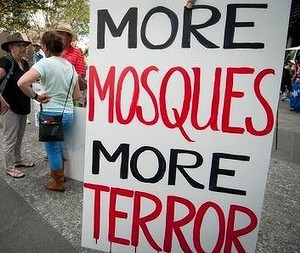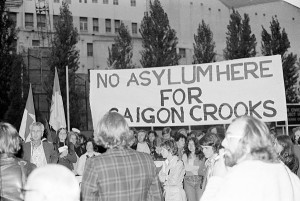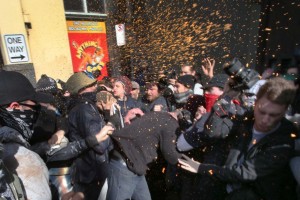Observation is inherent to documentary form as we use the techniques and devices we have at our disposal to critique and bring light to the world around us, however, it is through this critiquing that documentary form blurs a few lines. Can you observe and push your own agenda at the same time?
The Oxford Dictionary defines the word observe as to “Notice or perceive (something) and register it as being significant.” The observational mode in documentary was a movement which occurred due to an increase in accessibility. The camera became mobile and so too did the subject. The observational mode “look[s] on as social actors go about their lives as if the camera were not present” (Nichols, 2010, 150). The observational mode sought to observe and record reality itself. However, films within the observational mode such as Primary (Drew, 1960), Monterey Pop (Pennebaker, 1968) and Don’t Look Back (Pennebaker, 1967) often did not do exactly what they set out to do – record life as though they, the filmmaker, were not present. Films such as Don’t Look Back (Pennebaker, 1967) boil life down to the significant moments, blurring the line between reality and construction.
The poetic and performative modes are often confused for each other as they both question the way we understand the world around us, and therefore each take a similar but varied approach to documenting and observing that world. The poetic mode tends to distance itself from the humanness of the subjects in the film, choosing instead to treat “people more typically… on a par with other objects as raw material that filmmakers select and arrange into associations and patterns of their choosing” (Nichols, 2010, 162), providing their story and the argument around the story the filmmaker wishes to present with emotional clout, but removing the agency from the subjects of the film, who themselves are often not the main subjects. In comparison to this, the performative mode “stress[es] the emotional complexity of experience” (Nichols, 2010, 202) allowing for a deeper, more empathetic understanding of the more general and abstract processes present in society. Both the poetic and performative modes do the exact opposite of observe. They directly manipulate and interact with subjects and environments to create an expressive, empathic and layered piece, which even though it may not blatantly show an individual’s experiences, we feel we have experienced them ourselves through the abstract techniques used by these modes. Although the poetic and performative modes and practitioners of such styles do not simply observe the world in order to present it, they create an abstracted view of it through first observing it themselves as filmmakers, and then allowing it to be expressed in an emotional and not analytical way, allowing for a deeper engagement with the subject.
Nichols argues that in order for a human subject to be shown ethically in a documentary, they need to be given agency and shown as “an active, self-determining agent of change” as opposed to a “victim” who “suffer[s] from a plight” (Nichols, 2001, 212). While observing subjects and their environment is intrinsic to the nature of documentary, when a filmmaker’s own agenda comes into the equation as well as the way in which they choose to observe the subject of the film can take away their agency, such as in Grierson’s Housing Problems (1935). By showing the housing situation in a broad, factual and dehumanising manner Grierson took away the human component of the situation and, by not allowing the audience to relate to the subjects on an emotional level, created a state in which the audience could detach themselves from what was occurring instead of engaging at a level of understanding. In this way, interaction and collaboration with the subject is key, not simply observing, as it allows for a greater level of connection and understanding to occur.
Can a filmmaker truly be an observer? As stated previously, the filmmaker’s agenda drives the documentary’s arc and is at the forefront of the documentary itself. In an interview, Emile De Antonio stated, “I approach all of my work from a consciously left viewpoint” (Crowdus, 1982, 21). As a documentary filmmaker he himself has consciously made the choice to present only one side of an issue, the side which he himself sees as correct. Many other documentary filmmakers also make their political agendas and beliefs evident throughout their films, mainly through the choice of topic, such as The Box (Windy, 2001) who was “motivated by a feminist consciousness” (Chao, 2010, 79) in her film about a lesbian couple in China, advancing her own agenda through someone else’s story. Santiago Alvarez stated in an interview about his film career, which arose from the revolution in Cuba, that “the social needs forced us to become what we did… that state of constant aggression, constant war, our cinema had to be consistent with that reality” (Alvarez, 1975, 18). In this way, Alvarez, Windy and De Antonio are all voices for social change, observing the world and then acting as a voice for those who need it. A strong argument, an agenda may be what is needed for a documentary film to make a stand and fight for some sort of awareness or social change to occur within society.
This essay, just like a documentary, has been advancing its own argument. We cannot simply observe our world, we must interact and engage with our environment and the subjects within that environment in order to create a layered, expressive and humanising image of that world. We must give the subject of the piece agency to tell their own story and not let our own agendas as filmmakers take over the process. We must find a way to let our own agendas and people’s unique stories work together to create a balanced and layered perspective that can work to actively cause social change.
- Oxford Dictionary Online, “Observe Definition”. Available at: http://www.oxforddictionaries.com/definition/english/observe
- Nichols, Bill, 2010, “Introduction to Documentary, Second Edition.” Bloomington: Indiana University Press, pp. 142-211
- Nichols, Bill, 2001, “Documentary Film and the Modernist Avant-Garde”, Critical Inquiry, Vol. 27, No. 4 (Summer, 2001), pp. 580-610
- Crowdus, Gary; Dan Georgakas and Emile De Antonio, 1982, “History is the Theme of All My Films: An Interview with Emile De Antonio” Cinéaste, Vol. 12, No. 2 (1982), pp. 20-28
- Chao Shi-Yan, 2010, “Coming out of The Box, Marching as Dykes”, in Berry, Chris; Xinyu, Lu; Rofel, Lisa, 2010, The New Chinese Documentary Film Movement: For the Public Record, Hong Kong University Press, Hong Kong, pp. 77–95
- Alvarez, Santiago, 1975, “5 Frames Are 5 Frames, Not 6, But 5: An Interview with Santiago Alvarez”, Cinéaste, Vol. 6, No. 4 (1975), pp. 16-21

